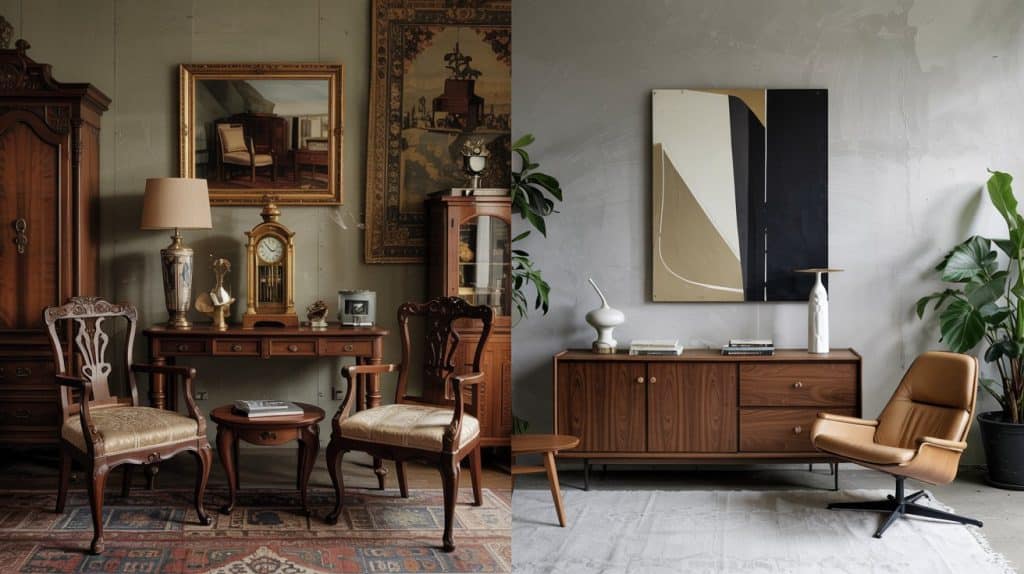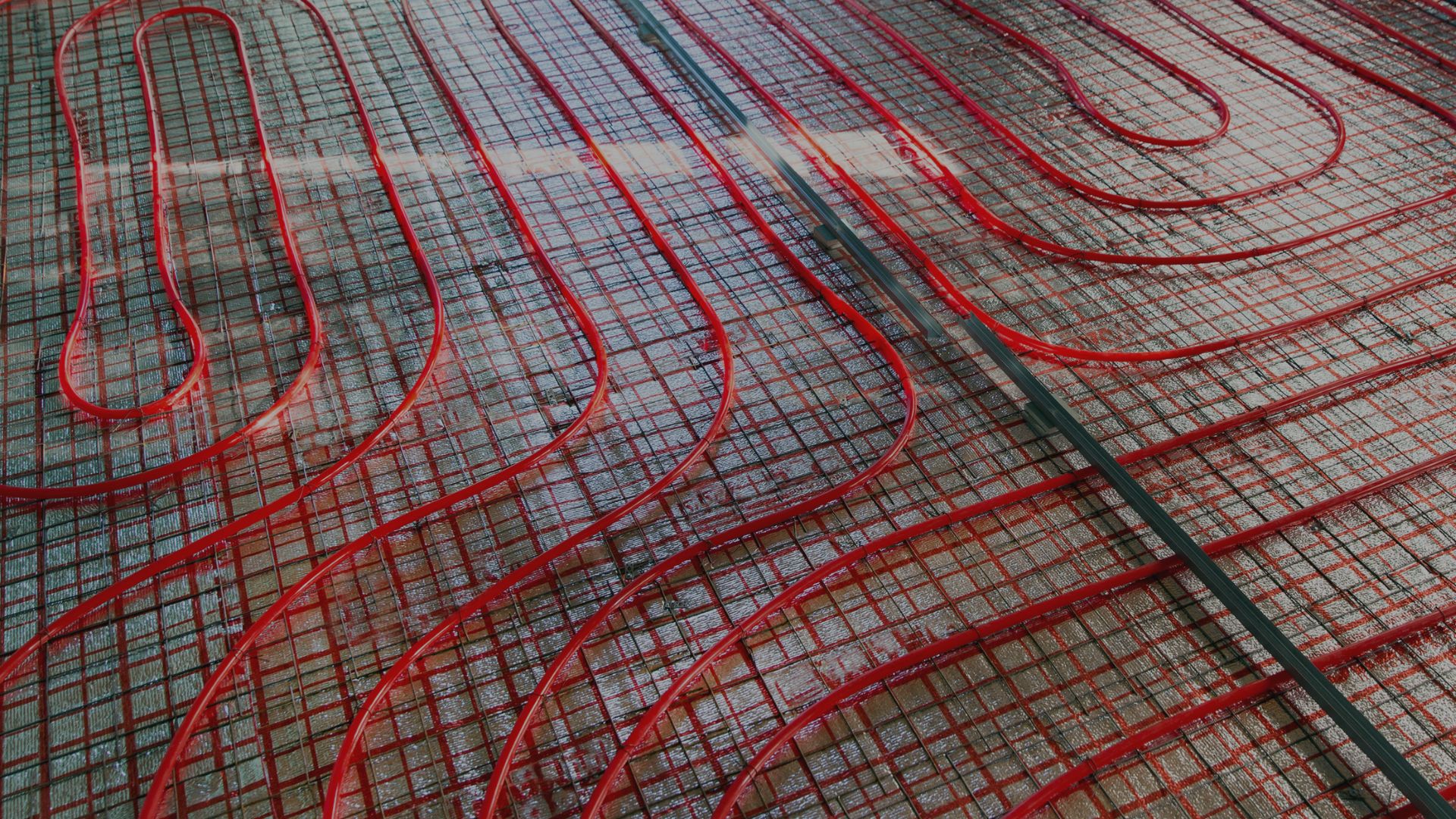What makes a room feel like home?
Often, it’s the furniture style you choose. Furniture styles are design blueprints; they define shapes, materials, colors, and the overall mood of your space.
From Victorian beauty to mid-century simplicity, each style tells a story. Some reflect historical periods. Others mirror cultural movements or modern lifestyles.
Knowing types of furniture styles helps you make smart buying decisions. It prevents costly mistakes. It creates spaces that feel intentional rather than random.
This guide covers various furniture styles, their origins, key features, and how to mix them like a pro. Ready to change your home? Let’s start.
What Are Furniture Styles?
A furniture style is a collection of design features that make a piece recognizable. These features include shapes, materials, finishes, and decorative elements. Think of it like a fingerprint for furniture.
Every style reflects something bigger. It might show a historical period, a cultural movement, or a specific design philosophy.
For example, Victorian furniture reflects the ornate tastes of 19th-century England. Scandinavian design mirrors the Nordic love for simplicity and function.
Learning about furniture styles helps you make smart choices. You’ll know what works in your space.
Various Types ofFurniture Styles
Furniture styles have changed over centuries, reflecting changes in culture, materials, and design philosophies.
From ornate traditional pieces to sleek modern designs, each style offers a unique blend of form and function.
1. American Colonial (1600s to 1800s)
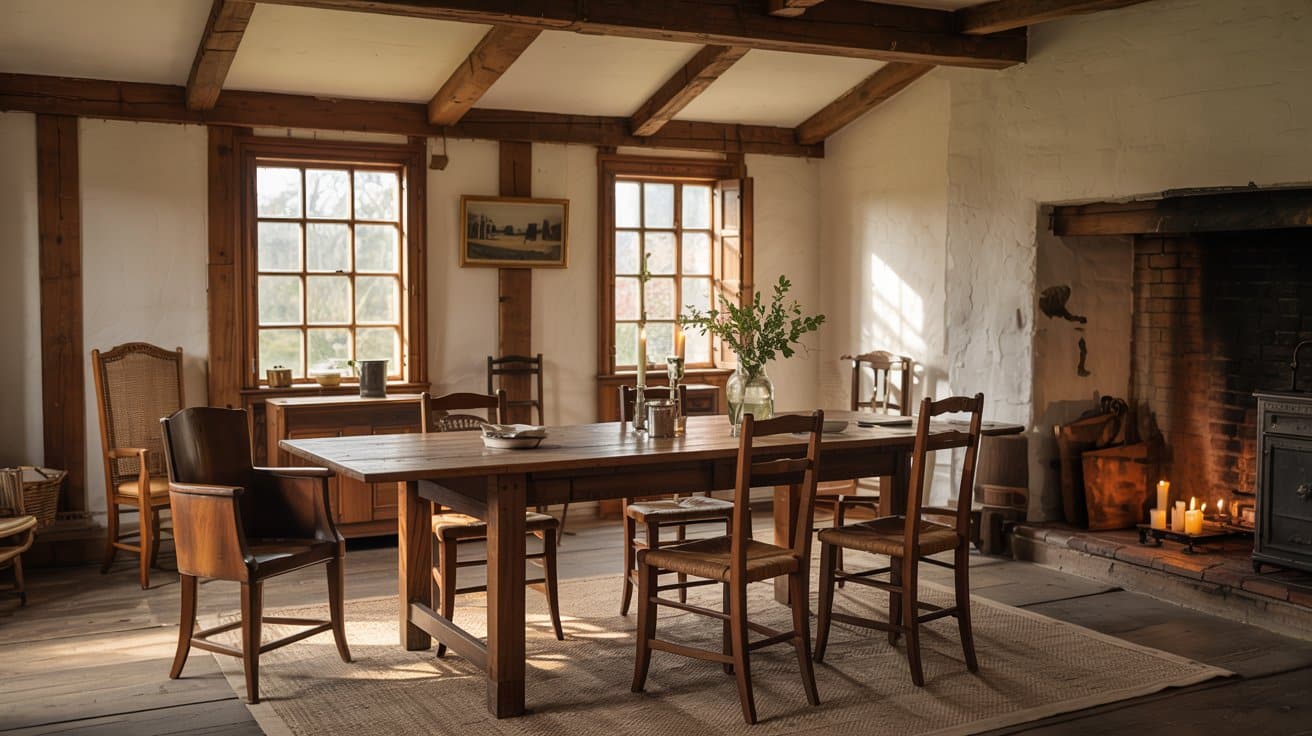
American Colonial furniture reflects early American craftsmanship. It’s practical, sturdy, and rich with historical significance. Key features:
- Simple, functional lines
- Local hardwoods (oak, pine, cherry)
- Straightforward construction methods
- Minimal decoration or carving
- Historic, traditional charm
American Colonial pairs well with vintage or rustic accents for authenticity. It works beautifully in historic homes or traditional settings.
2. Traditional Style Furniture (1600s to 1900s)

Traditional furniture reflects European heritage and American colonial history. It features formal beauty through ornate details. Key features:
- Dark woods (mahogany, walnut, cherry)
- Carved details on legs and backs
- Curved lines and ornamental hardware
- Formal, balanced proportions
- Heavy, substantial construction
Traditional style works well in formal living and dining areas. Use in homes with classic architecture for best results.
3. Rococo (1730s–1770s)
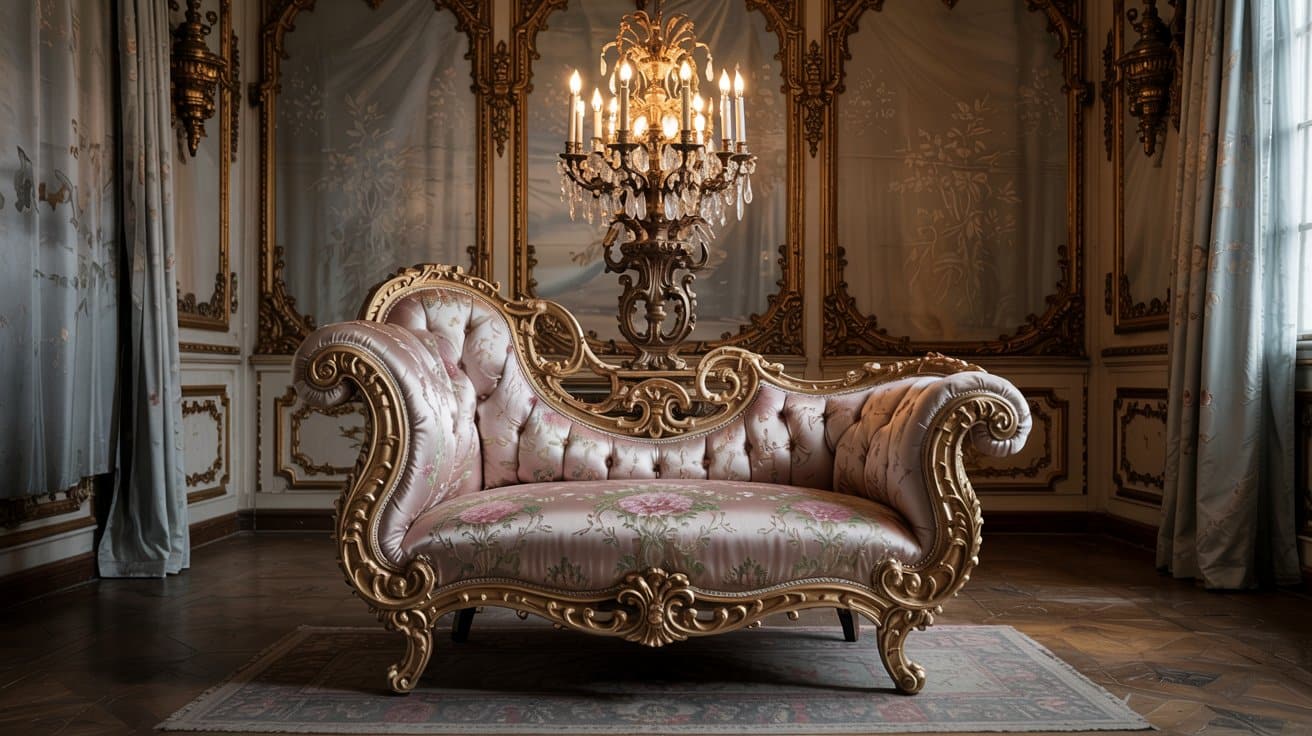
Rococo is French Baroque taken to extremes. It’s ornate, playful, and theatrical. What defines it:
- Elaborate gold gilding
- Asymmetrical curves
- Shell and scroll motifs
- Pastel colors
- Ornate upholstery
Rococo furniture suits formal dining rooms, grand entryways, and statement bedrooms. Use it sparingly; a little goes a long way.
These styles don’t work for every home. But in the right setting, they’re stunning.
4. Empire Style (Early 1800s)
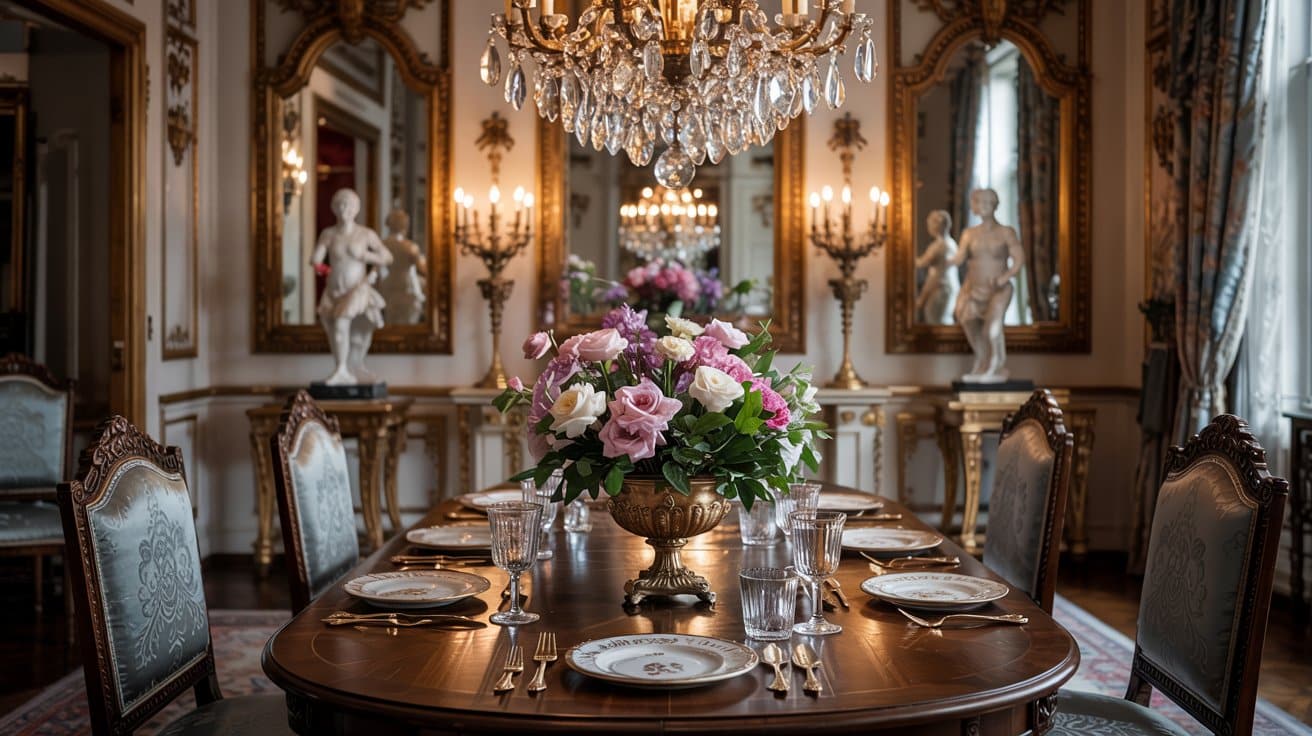
The Empire style reflects Napoleonic France. It’s formal, grand, and historically rich with classical influences. Key features:
- Dark woods (mahogany) with gilded accents
- Bronze and brass hardware
- Classical motifs (columns, wreaths)
- Rich, polished finishes
- Symmetrical, formal design
Empire furniture works in formal, stately rooms or as statement pieces. Use sparingly for maximum visual impact.
5. Rustic Furniture (1800s to Present)
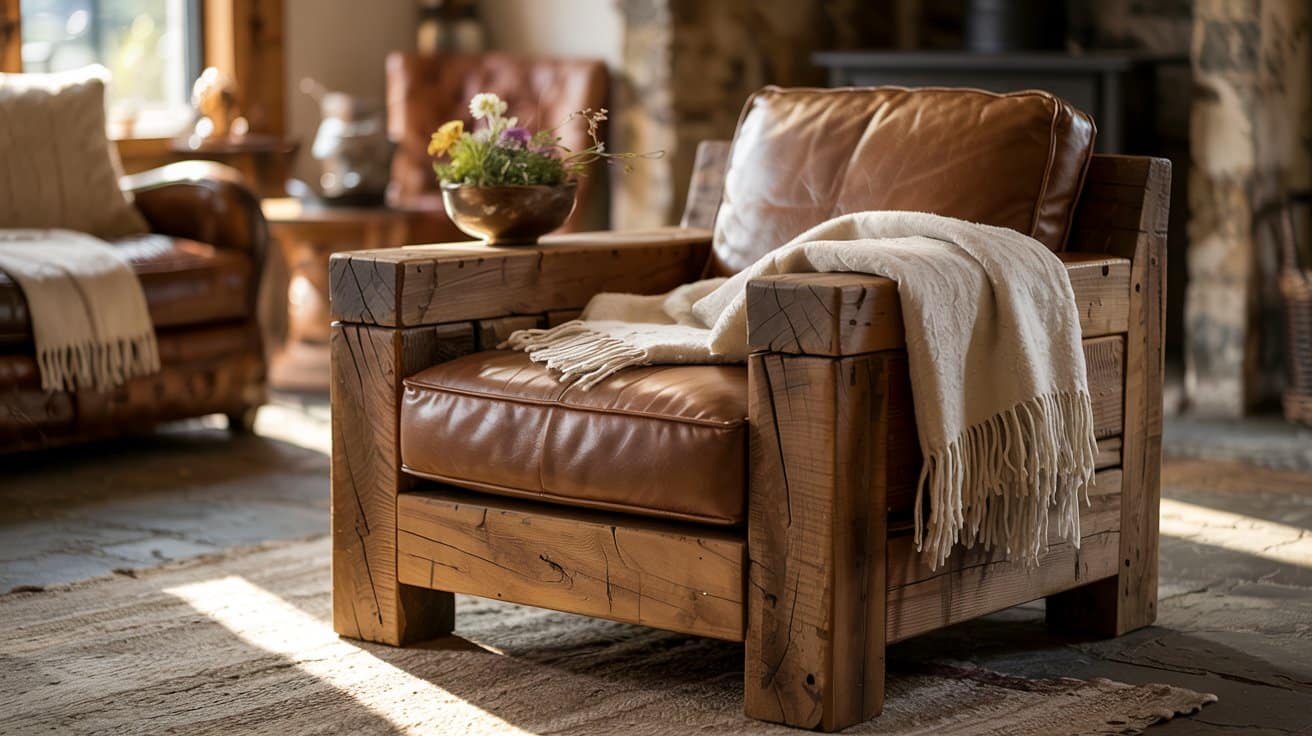
Rustic furniture celebrates natural imperfections. It brings outdoor textures inside through handcrafted, substantial pieces. Key features:
- Rough-hewn or thick wood construction
- Visible wood grain and natural knots
- Earthy, neutral colors
- Sturdy, heavy construction
- Mix of textures (wood, leather, natural fibers)
Rustic style works great for cabins or adding warmth to modern homes. Balance rough textures with soft fabrics for comfort.
6. Farmhouse / Modern Farmhouse (1800s to Present)

Farmhouse furniture brings country comfort to any home. Modern farmhouse updates this classic style with cleaner lines and neutral colors. Key features:
- White or cream-painted wood
- Distressed finishes and natural textures
- Open shelving and practical storage
- Natural fabrics (cotton, linen)
- Mix of old and new pieces
Farmhouse style works best when you blend vintage finds with contemporary items. This creates a cozy yet modern look.
7. Art Nouveau (1890 to 1910)
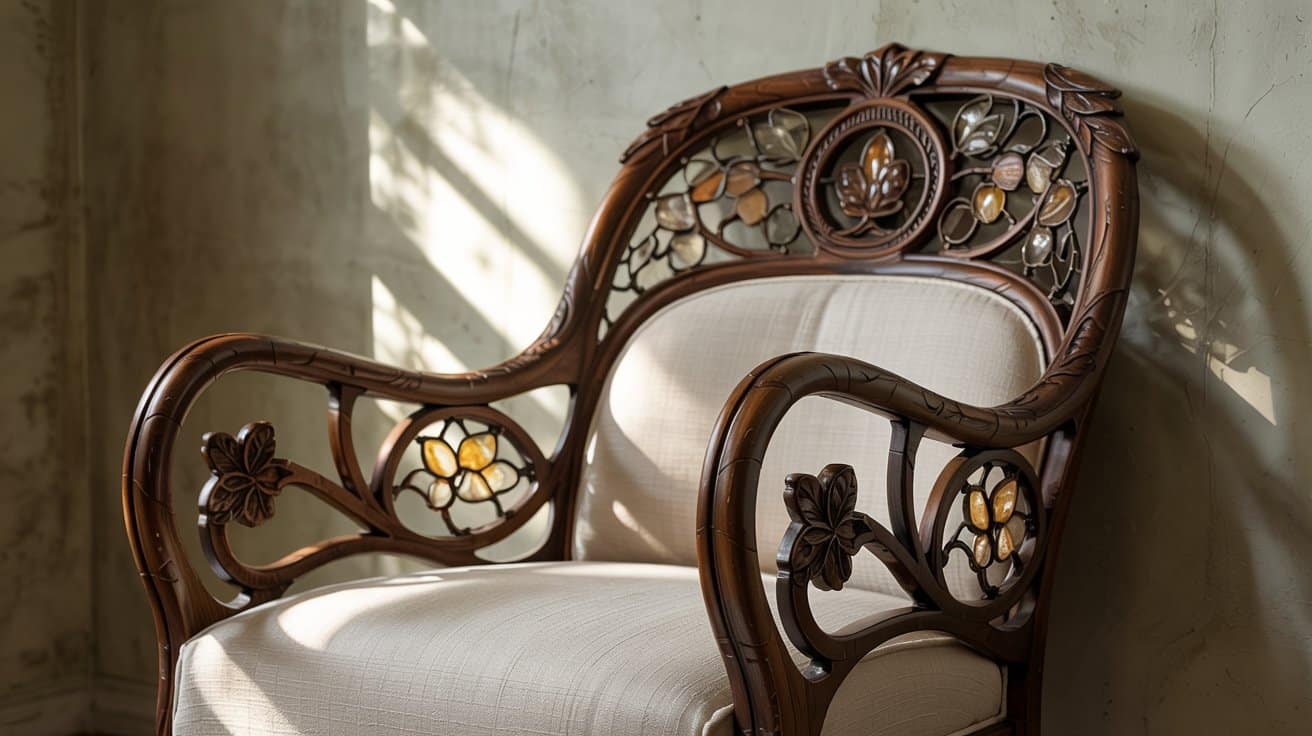
Art Nouveau furniture flows with organic curves. It draws inspiration from plants, flowers, and natural forms. Key features:
- Flowing, asymmetrical lines
- Nature motifs (flowers, vines, insects)
- Carved wood details
- Stained glass accents
- Handcrafted quality
Art Nouveau works best as accent pieces rather than full room settings. Use it to add artistic flair to contemporary spaces.
8. Mission Style Furniture (1890 to 1920)
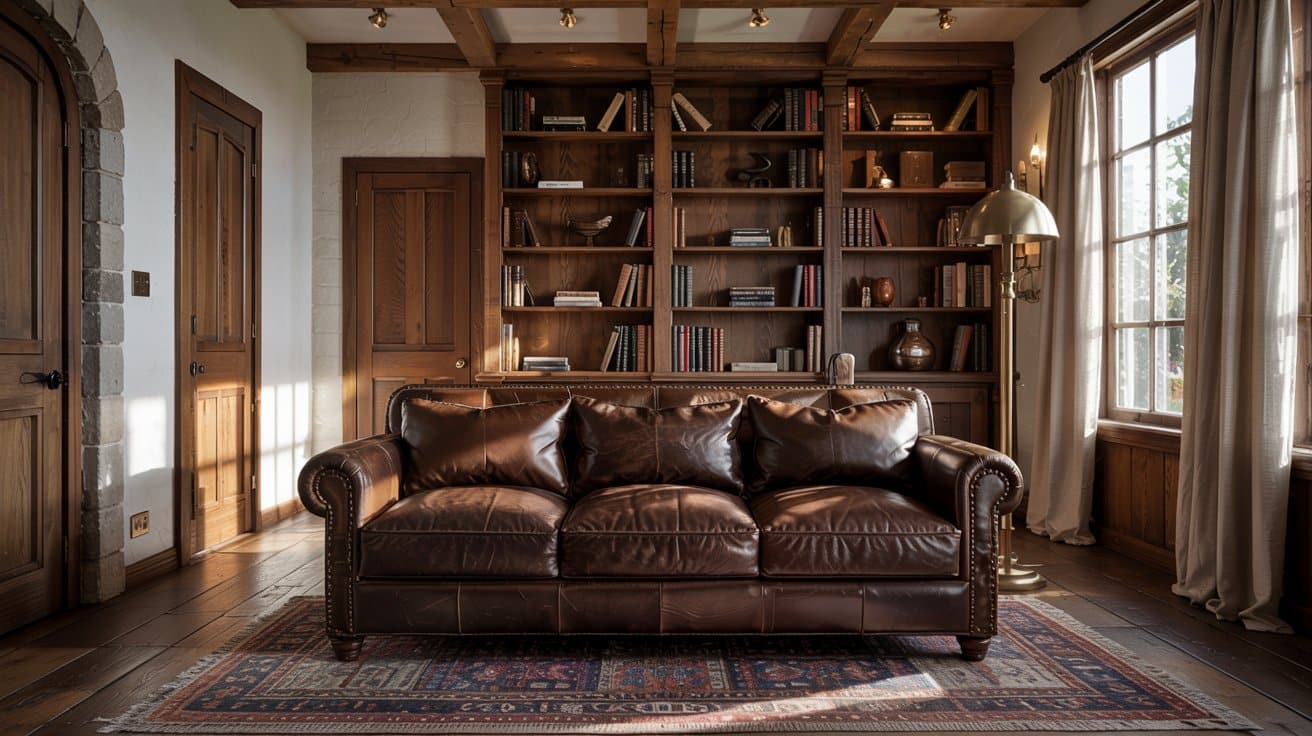
Mission style emerged from the Arts and Crafts movement. It values honest craftsmanship and quality materials over decoration. Key features:
- Straight, vertical, and horizontal lines
- Exposed joinery and construction details
- Simple wood finishes (usually oak)
- Leather upholstery with metal tacks
- Functional, sturdy design
Mission furniture works best in casual, earthy interiors. It suits dens, libraries, and family rooms perfectly.
9. Modern Furniture Style (1900 to 1950)
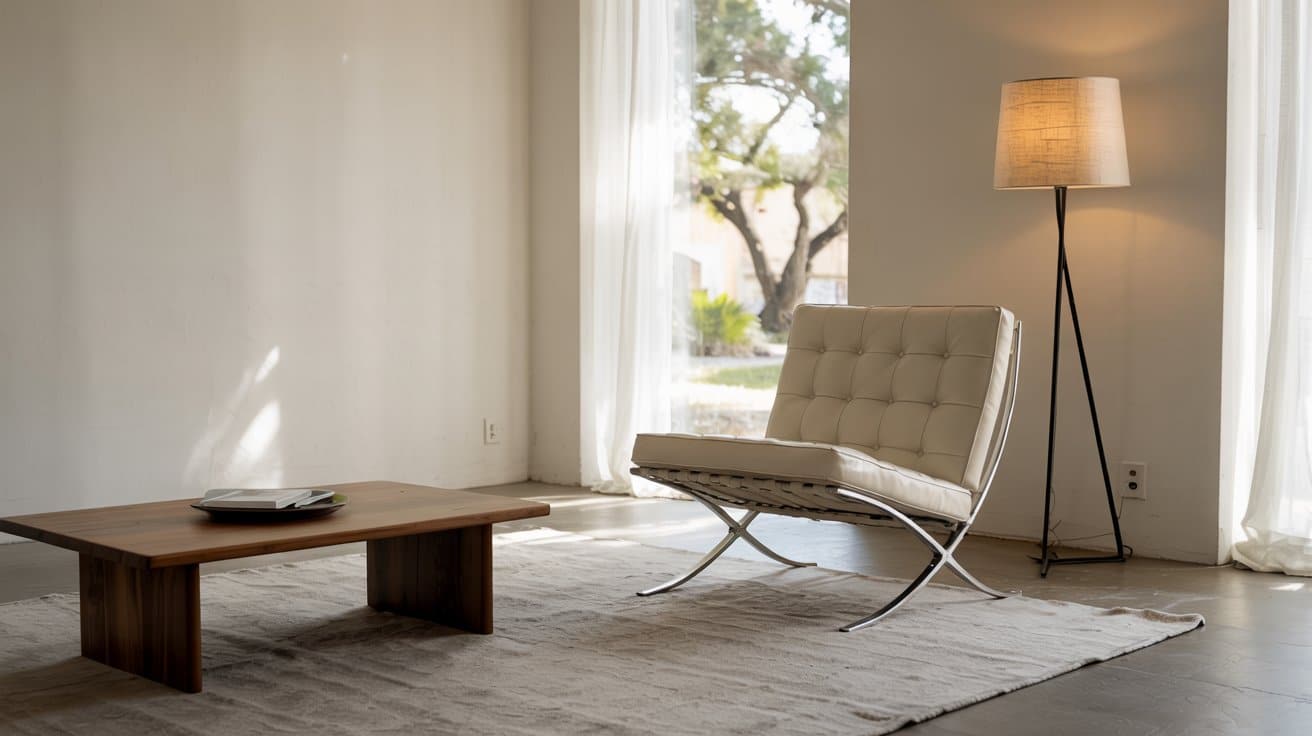
Modern furniture emphasizes function over form. It strips away unnecessary details and celebrates honest materials. Key features:
- Right angles and flat surfaces
- Tubular steel and molded plywood
- Minimal decoration or ornamentation
- Neutral color palettes
- Visible construction methods
Modern style works best in functional, clutter-free spaces. Keep decorative items to a minimum for maximum impact.
10. Industrial / Industrial Modern (1900s to Present)

Industrial furniture draws on factory and warehouse design. It celebrates raw materials and honest construction through utilitarian design. Key features:
- Metal frames (steel, iron) with wood surfaces
- Exposed hardware and mechanical details
- Neutral colors (black, gray, brown, rust)
- Reclaimed or distressed materials
- Functional, no-frills construction
Industrial furniture pairs well with soft textiles to balance its masculine aesthetic. Add pillows, throws, or area rugs for warmth.
11. Art Deco (1920s to 1930s)

Art Deco is glamour personified. It features geometric patterns, luxurious materials, and bold symmetry. Key features:
- Geometric shapes and patterns
- Exotic woods (ebony, zebrawood)
- Metallic finishes (chrome, brass, gold)
- Rich colors (black, gold, emerald)
- Mirror and glass accents
Art Deco furniture makes strong statements. It works in formal spaces, entryways, and rooms that need drama.
12. Vintage Furniture (1920s to 1980s)
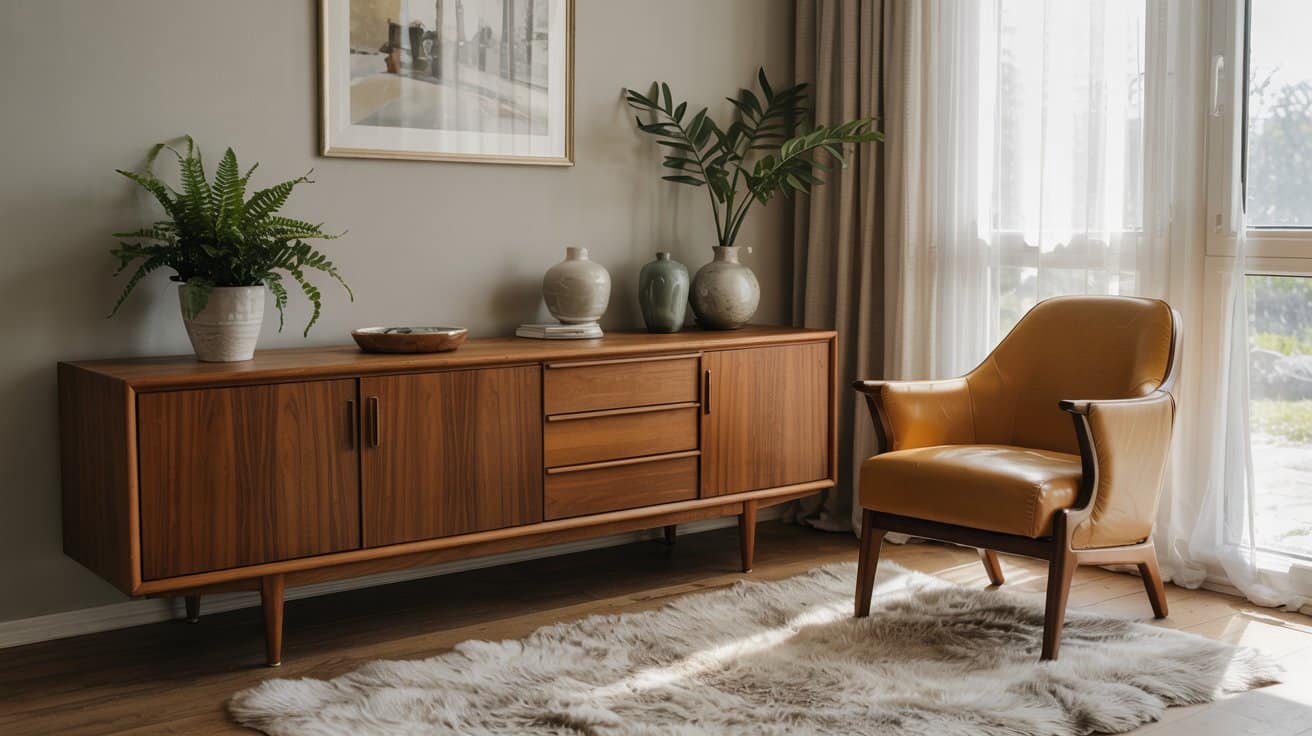
Vintage furniture comes from past decades. Each piece adds character, history, and nostalgic appeal to modern spaces. Key features:
- Design styles from specific past eras
- Sometimes worn or aged finishes
- Quality construction from earlier periods
- Classic proportions and details
- Mix of wood, metal, and fabric materials
Vintage pieces add character when mixed with modern interiors. Use one or two vintage items as focal points.
13. Scandinavian Furniture (1930s to Present)
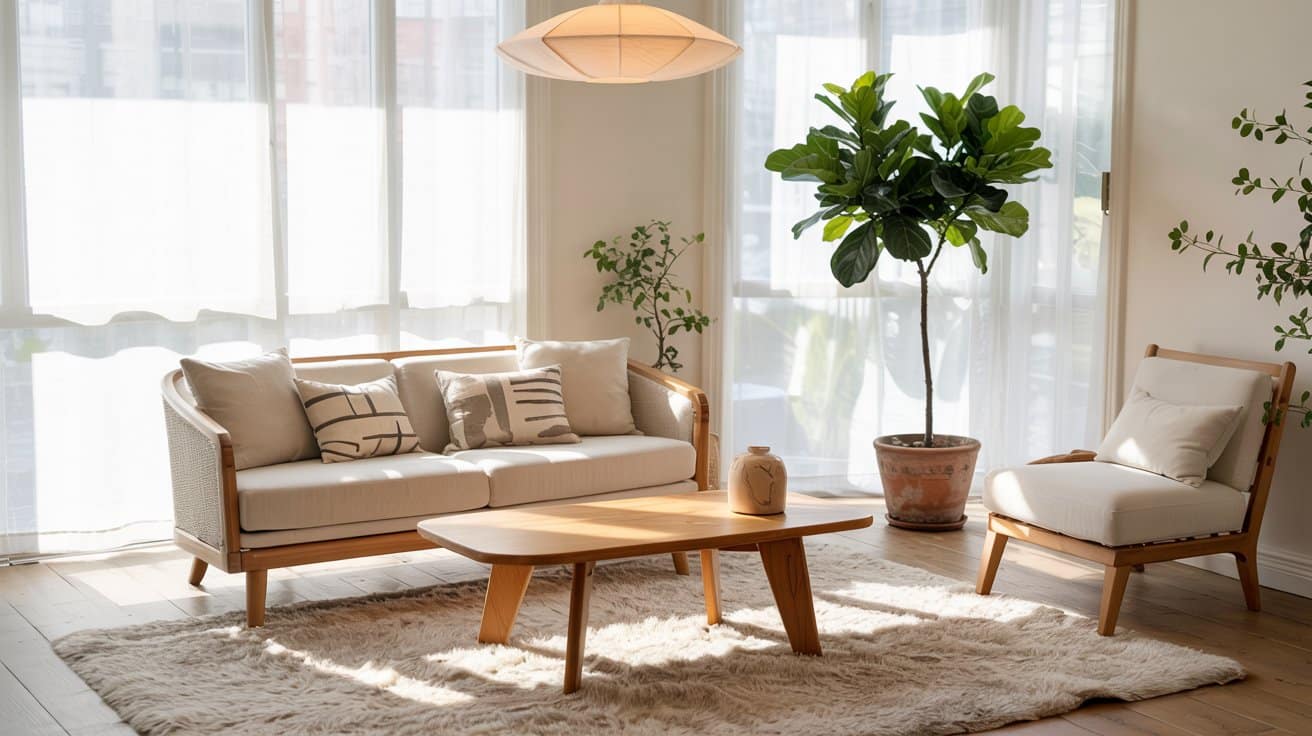
Scandinavian design comes from the Nordic countries. It values simplicity, function, and connection to natural light. Key features:
- Light woods (birch, ash, pine)
- Minimalist, clean lines
- White and neutral color palettes
- Functional, comfortable pieces
- Handcrafted quality with simple details
Scandinavian furniture works best in small spaces, needing simplicity and light. Use white walls and natural wood tones throughout.
14. Mid-Century Modern (1933 to 1965)
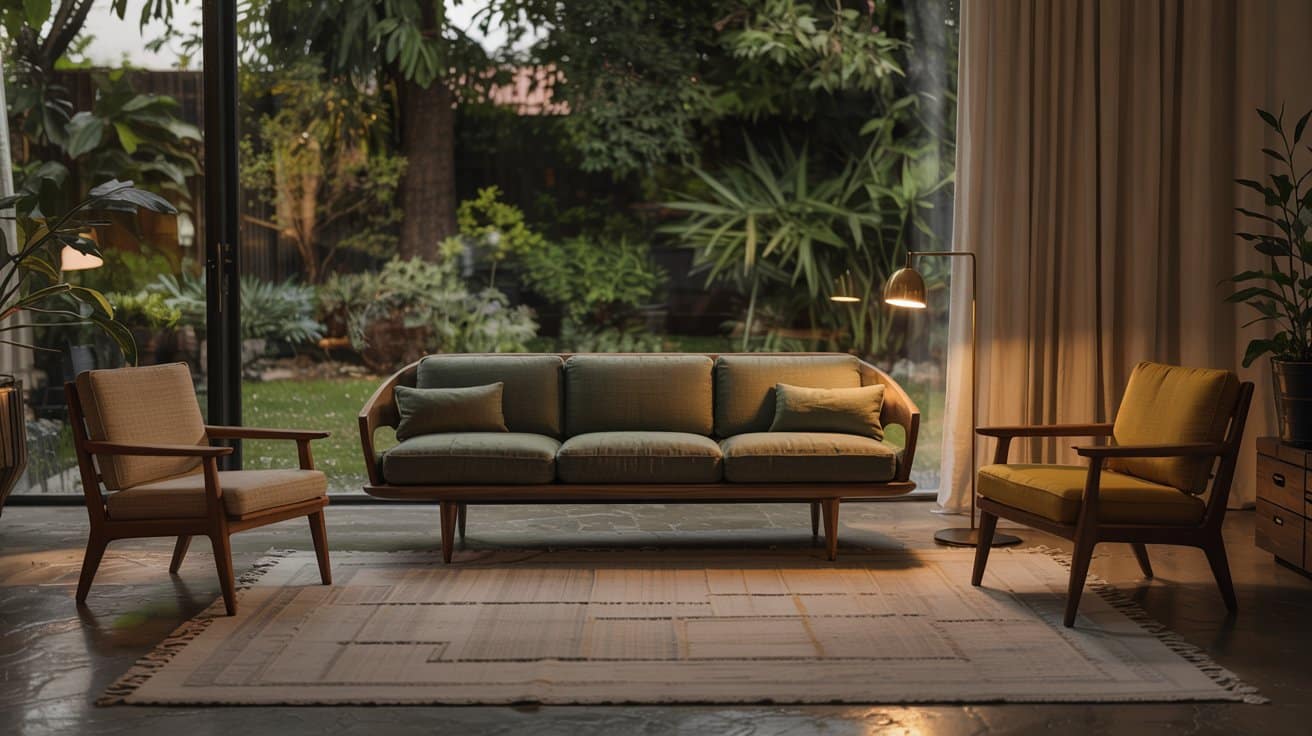
Mid-century modern furniture remains one of the most sought-after furniture styles today. It combines function with beauty through clean lines and organic shapes. Key features:
- Tapered legs and sleek silhouettes
- Mix of materials (teak, walnut, oak, metal, glass)
- Organic curves balanced with straight edges
- Warm wood tones with pops of color
- Functional design without excess decoration
Mid-century modern works well in bright, open spaces with minimal clutter. Let each piece breathe with plenty of space around it.
15. Minimalist Furniture (1960s to Present)
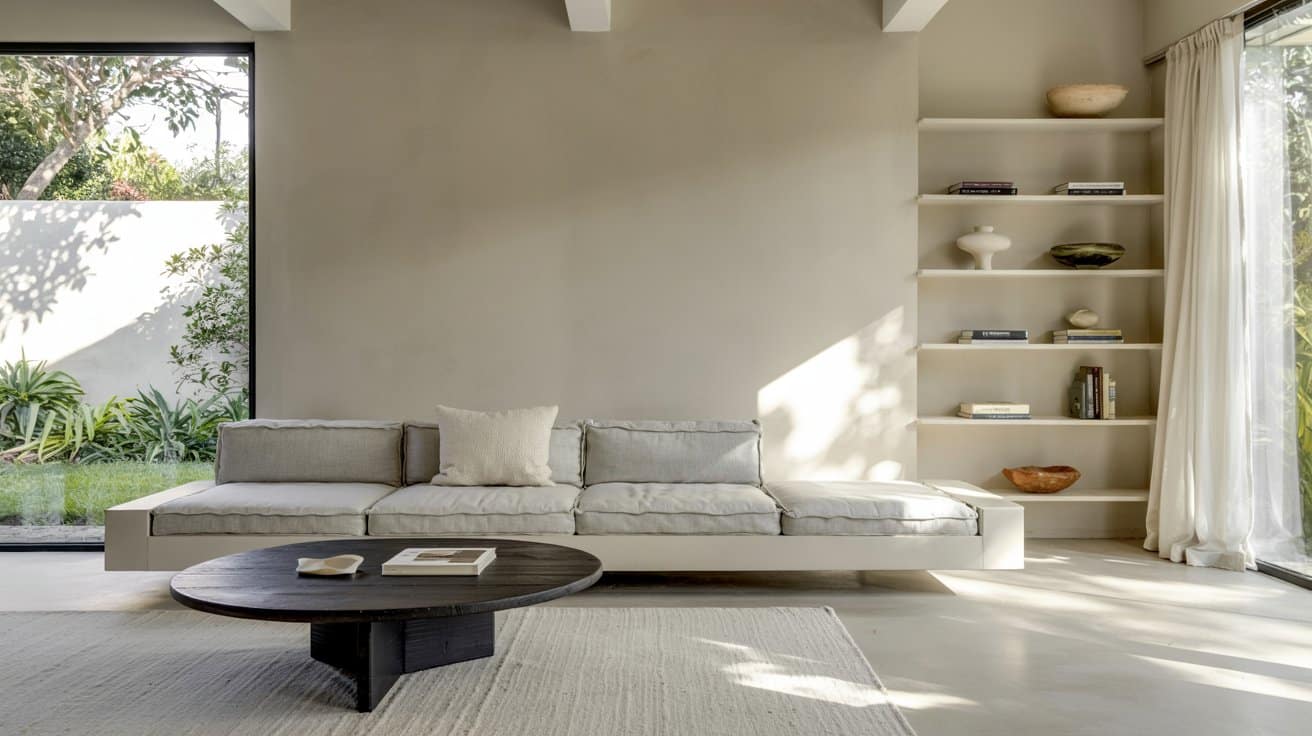
Minimalist furniture strips down to the absolute basics. It values quality over quantity and purpose over decoration. Key features:
- Simple, geometric shapes
- Neutral tones (white, gray, black, beige)
- Hidden storage solutions
- Clean lines without ornamentation
- High-quality materials in basic forms
Minimalist style requires keeping spaces airy and clutter-free. Store items out of sight for maximum visual calm.
16. Bohemian Furniture (1960s to Present)

The Bohemian style is free-spirited and personal. It layers patterns, colors, and textures without following strict rules. Key features:
- Bright, saturated colors
- Mix of patterns (geometric, floral, tribal)
- Low seating and floor cushions
- Natural elements and plants
- Eclectic combination of vintage and handmade pieces
Bohemian furniture works when you intentionally layer textures and patterns. Don’t be afraid to mix colors and eras freely.
17. Shabby Chic (1980s to Present)
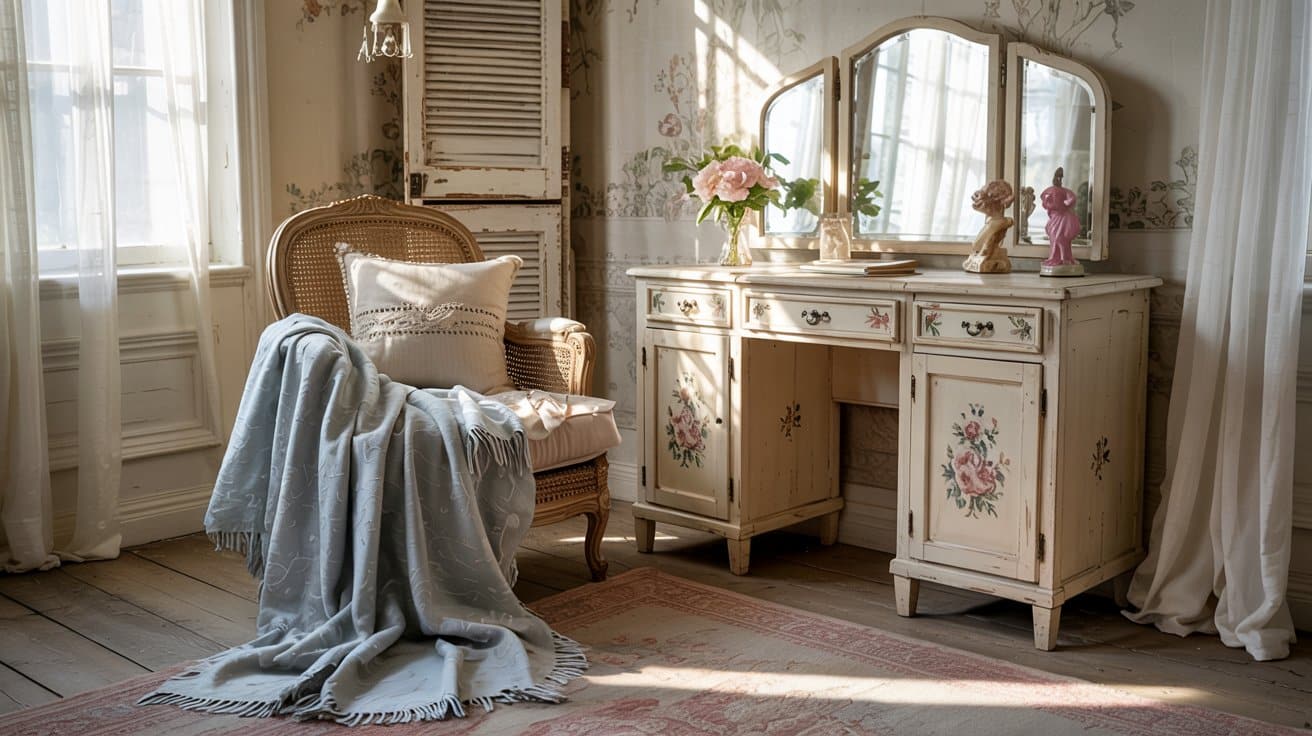
Shabby chic combines vintage pieces with soft colors. It values worn finishes and comfortable textiles over perfection. Key features:
- Distressed or weathered wood finishes
- Pastel color palettes (pink, cream, light blue)
- Vintage charm and romantic feel
- Soft, comfortable fabrics
- Mix of antique and reproduction pieces
Shabby chic works perfectly for cozy bedrooms or cottage-style spaces. Use whites, creams, and soft pastels throughout.
18. Contemporary (1990s to present)

Contemporary furniture reflects current trends. It borrows from multiple furniture styles but stays fresh and comfortable. Key features:
- Smooth, curved surfaces
- Mixed materials (wood, metal, glass)
- Low-profile silhouettes
- Neutral color palettes (gray, beige, white)
- Comfortable yet sleek design
Contemporary style blends well with transitional pieces for flexibility. This allows you to update your look as trends change.
19. Transitional Furniture (1990s to Present)
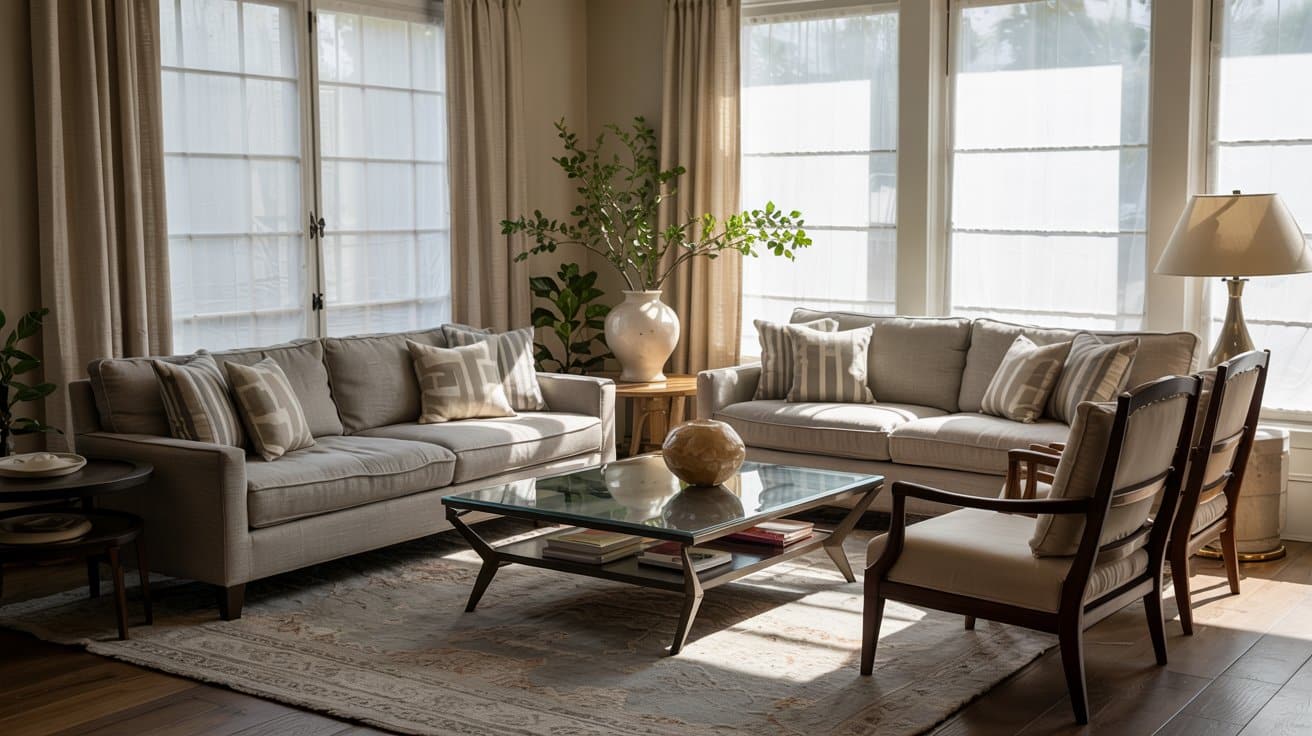
Transitional style bridges traditional comfort with contemporary lines. It’s one of the most popular furniture styles for its flexibility. Key features:
- Mix of traditional and contemporary elements
- Balanced, moderate proportions
- Neutral fabrics and finishes
- Comfortable upholstery with clean lines
- Wood combined with metal or glass
Transitional furniture works well for blending different styles without conflict. Use it as a neutral base in any room.
20. Coastal Style (20th Century to Present)

Coastal furniture brings beach vibes indoors. It uses natural materials and relaxed proportions that mirror seaside living. Key features:
- Light woods and wicker
- Soft blues, whites, and sandy neutrals
- Natural fabrics (linen, cotton)
- Weathered or whitewashed finishes
- Casual, breezy vibe
Coastal style works perfectly for beach homes or rooms needing a relaxed feel. Keep colors light and materials natural throughout.
21. Hybrid / Modern Variants (2000s to Present)
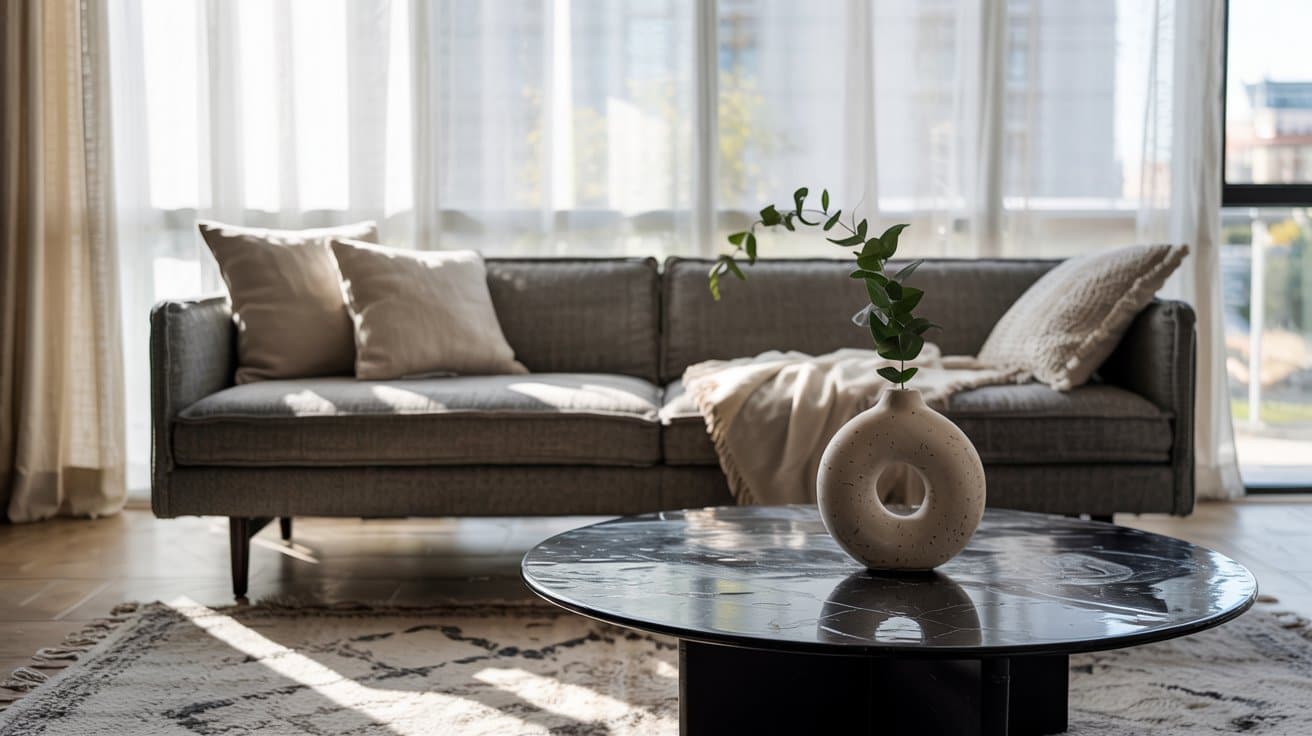
Hybrid furniture styles freely blend multiple influences. They include Casual Luxe, Relaxed Modern, and Urban Collective approaches. Key features:
- Mix of comfort and contemporary elements
- Multiple materials (wood, metal, glass, upholstery)
- Functional yet stylish design
- Adaptable to changing needs
- Personal, flexible aesthetic
Hybrid styles work perfectly for adaptable urban homes. Mix types of furniture styles freely while maintaining color or material consistency.
22. Maximalist Style (2010s to Present)
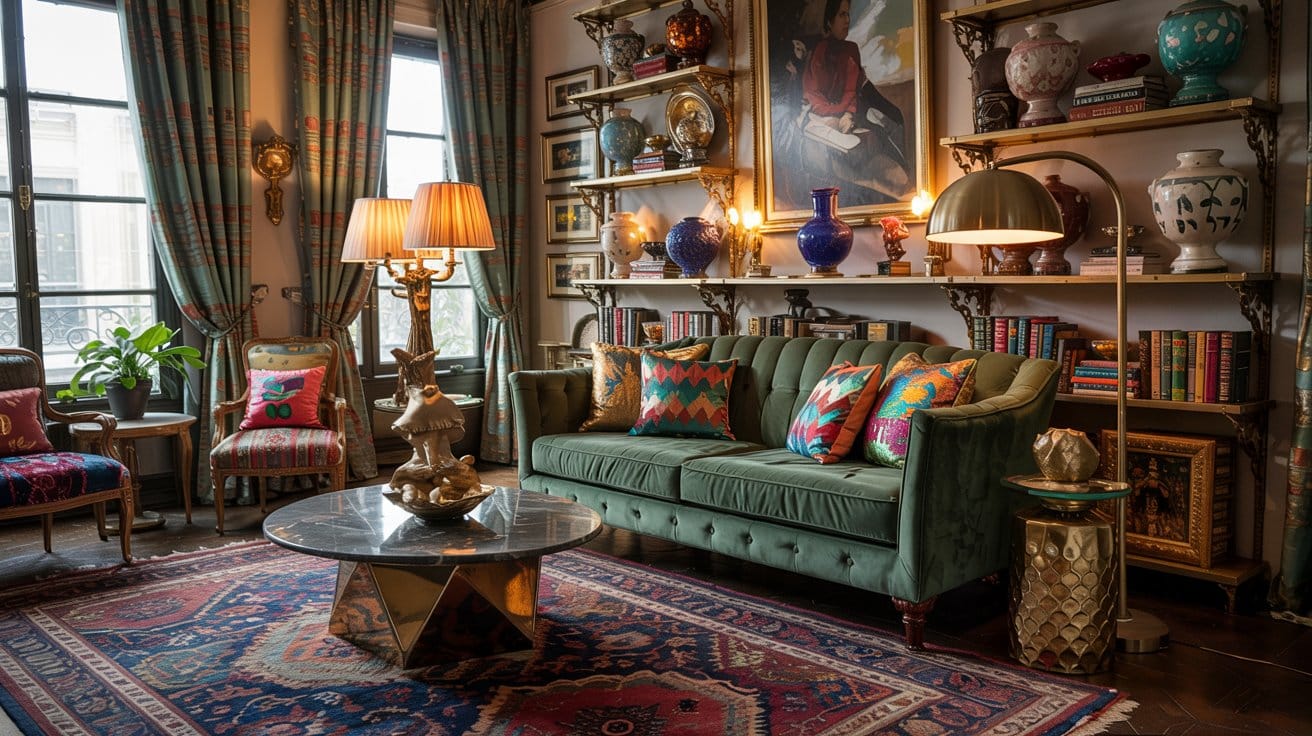
Maximalist style rejects minimalism completely. It celebrates abundance, color, and bold personality through layered design. Key features:
- Layered patterns and textures
- Rich, saturated colors
- Statement furniture pieces
- Mix of materials and eras
- Bold, confident design choices
Maximalist furniture works best for bold personalities who love eclectic interiors. Layer with intention, not randomness, for success.
23. Formal Furniture (Timeless / Classical)
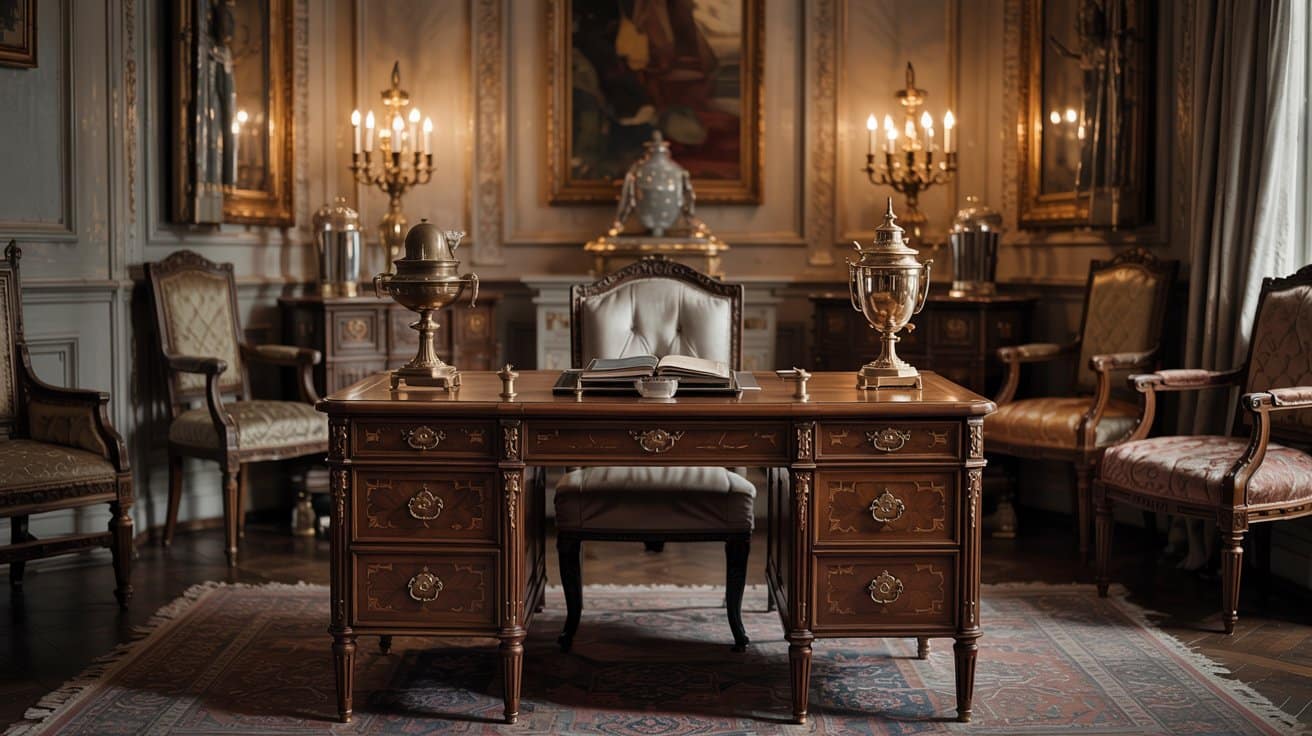
Formal furniture creates classy and beautiful spaces. It uses high-quality materials and careful craftsmanship throughout. Key features:
- Rich woods with polished finishes
- Plush, luxurious fabrics
- Symmetrical arrangements and design
- Ornate detailing and embellishments
- Traditional proportions and scale
Formal style works best in grand entryways and beautiful living spaces. Use in homes with high ceilings and large rooms.
Tips to Choose the Right Furniture for Your Home
Choosing furniture isn’t just about style; it’s about creating comfort and balance. Here are a few simple ways to pick the right pieces for your home:
- Start with your lifestyle. Think about how you use each space. A family room may need durable, easy-to-clean fabrics, while a reading nook can handle something cozier.
- Measure before you buy. Great furniture looks awkward if it’s the wrong scale. Always measure your room and doorways to avoid surprises.
- Mix, don’t match. Combining styles adds personality. For example, pair a rustic wood table with sleek modern chairs for contrast.
- Stick to a color story. Choose 2–3 main colors and repeat them across rooms for a cohesive look.
- Invest in quality pieces. Spend more on items you’ll use daily, like sofas, dining tables, and beds, and save on accents or decor.
- Trust your instincts. Your home should feel like you, not a catalog. If a piece makes you smile, it probably belongs.
Conclusion
Knowing furniture styles gives you the confidence to design your space. If you prefer mid-century clean lines, rustic warmth, or industrial edge, each style serves a purpose.
The best approach? Choose one anchor style and layer in complementary pieces. Mix thoughtfully; balance materials, maintain consistent finishes, and let your personality guide decisions.
Remember, types of furniture styles aren’t rigid rules. They’re tools to help you create spaces you’ll love for years.
Start by identifying what resonates with you. Check out styles that match your lifestyle. Then build your home, one intentional piece at a time.
Your perfect furniture personality is waiting to be found.

